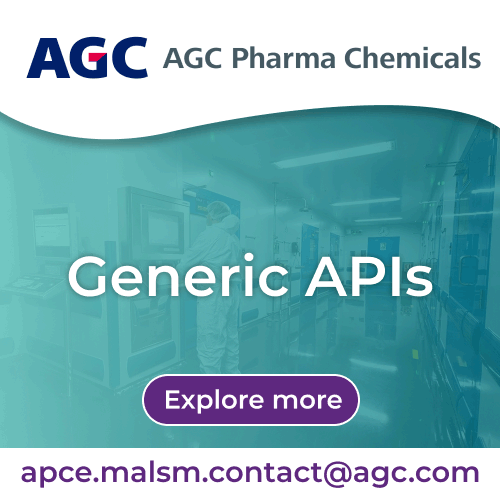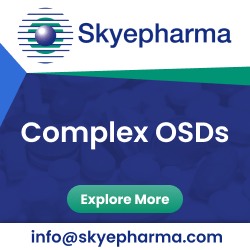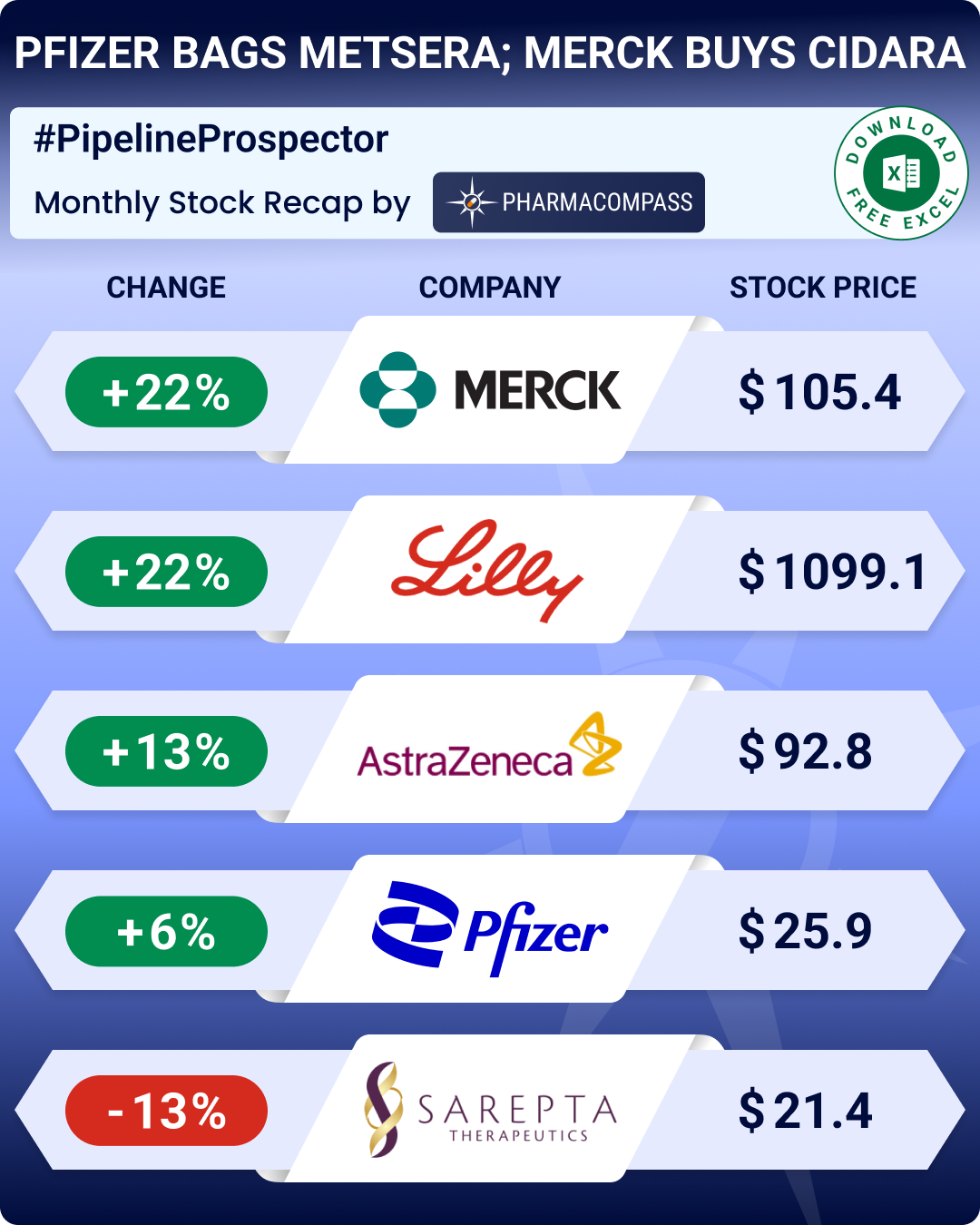BLOG
MARKET INTEL by PharmaCompass
CONTENT by Suppliers
- Interview #SpeakPharma
- Video #SupplierSpotlight
- Vlog #PharmaReel
- Company Bio #AboutSupplier
- Service Bio #AboutCapabilities
News
Create content with us, ask us

01 Buccal / Orodispersible
02 Buccal / Orodispersible
03 Buccal / Orodispersible
04 Capsule
05 Capsule
06 Capsule
07 Capsule
08 Capsule
09 Capsule
10 Capsule
11 Capsule
12 Capsule
13 Capsule
14 Capsule
15 Capsule
16 Chewable / Suckable
17 Clinical Supply
18 Clinical Supply
19 Clinical Supply
20 Clinical Supply
21 Clinical Supply
22 Clinical Supply
23 Clinical Supply
24 Compounding
25 Controlled / Immediate / Modified Release
26 Controlled / Immediate / Modified Release
27 Controlled / Immediate / Modified Release
28 Controlled / Immediate / Modified Release
29 Controlled / Immediate / Modified Release
30 Controlled / Immediate / Modified Release
31 Controlled / Immediate / Modified Release
32 Controlled / Immediate / Modified Release
33 Controlled / Immediate / Modified Release
34 Controlled / Immediate / Modified Release
35 Controlled / Immediate / Modified Release
36 Controlled Substance
37 Controlled Substance
38 Controlled Substance
39 Controlled Substance
40 Controlled Substance
41 Controlled Substance
42 Controlled Substance
43 Cream / Gel / Lotion / Ointment
44 Cream / Gel / Lotion / Ointment
45 Cream / Gel / Lotion / Ointment
46 Cream / Gel / Lotion / Ointment
47 Cream / Gel / Lotion / Ointment
48 Cream / Gel / Lotion / Ointment
49 Cream / Gel / Lotion / Ointment
50 Cream / Gel / Lotion / Ointment
51 Cream / Gel / Lotion / Ointment
52 Cream / Gel / Lotion / Ointment
53 Dry / Wet Granulation
54 Granule / Pellets
55 Granule / Pellets
56 Granule / Pellets
57 Granule / Pellets
58 Inhalation / Nasal
59 Inhalation / Nasal
60 Inhalation / Nasal
61 Inhalation / Nasal
62 Injectable / Parenteral
63 Injectable / Parenteral
64 Injectable / Parenteral
65 Injectable / Parenteral
66 Injectable / Parenteral
67 Injectable / Parenteral
68 Injectable / Parenteral
69 Injectable / Parenteral
70 Injectable / Parenteral
71 Injectable / Parenteral
72 Injectable / Parenteral
73 Injectable / Parenteral
74 Lipid Formulation
75 Liposome / Microsphere / Nanoparticle
76 Liposome / Microsphere / Nanoparticle
77 Liposome / Microsphere / Nanoparticle
78 Liquid Formulation
79 Liquid Formulation
80 Liquid Formulation
81 Liquid Formulation
82 Liquid Formulation
83 Liquid Formulation
84 Liquid Formulation
85 Liquid Formulation
86 Liquid Formulation
87 Liquid Formulation
88 Lyophilization
89 Lyophilization
90 Lyophilization
91 Lyophilization
92 Lyophilization
93 Ophthalmic
94 Ophthalmic
95 Ophthalmic
96 Overview
97 Overview
98 Overview
99 Overview
100 Overview
101 Overview
102 Overview
103 Overview
104 Overview
105 Overview
106 Overview
107 Overview
108 Overview
109 Pediatric Formulation
110 Pediatric Formulation
111 Pediatric Formulation
112 Pediatric Formulation
113 Pediatric Formulation
114 Powder
115 Powder
116 Process Development & Optimization
117 Process Development & Optimization
118 Process Development & Optimization
119 Process Development & Optimization
120 Process Development & Optimization
121 Process Validation Studies
122 Process Validation Studies
123 Process Validation Studies
124 Scale-Up Capabilities
125 Scale-Up Capabilities
126 Scale-Up Capabilities
127 Scale-Up Capabilities
128 Scale-Up Capabilities
129 Scale-Up Capabilities
130 Scale-Up Capabilities
131 Scale-Up Capabilities
132 Small Scale Batch
133 Softgel Capsule
134 Softgel Capsule
135 Spray Drying
136 Sterile Liquid Formulation
137 Sterile Liquid Formulation
138 Sterile Liquid Formulation
139 Sterile Liquid Formulation
140 Steroid / Hormone
141 Steroid / Hormone
142 Suspension
143 Suspension
144 Suspension
145 Suspension
146 Suspension
147 Suspension
148 Tablet
149 Tablet
150 Tablet
151 Tablet
152 Tablet
153 Tablet
154 Tablet
155 Tablet
156 Tablet
157 Tablet
158 Tablet
159 Tablet
160 Tablet
161 Tablet
162 Tablet
163 Tablet
164 Tech Transfer
165 Tech Transfer
166 Tech Transfer
167 Tech Transfer
168 Tech Transfer
169 Tech Transfer
170 Tech Transfer
171 Tech Transfer
172 Tech Transfer
173 Topical
174 Topical
175 Topical
176 Topical
177 Topical
178 Topical
179 Vaginal / Rectal

01 AbbVie Contract Manufacturing
02 Aenova Group
03 Aizant Drug Research Solutions Pvt. Ltd.
04 Ascent Innovative Medicines
05 Athena Pharmaceutiques
06 Axxelent Pharma Science
07 Biopharma Group
08 Biophore India Pharmaceuticals Pvt Ltd
09 Bora Pharmaceuticals
10 Catalent Pharma Solutions
11 ChemExpress
12 Crenza Pharma
13 Douglas CDMO
14 Ethypharm
15 Etico Lifesciences
16 Ever Pharma
17 Evonik
18 Famar
19 GRAM Laboratory Inc
20 Gentec Pharmaceutical Group
21 Halo Pharmaceutical
22 Hameln rds
23 ICE Pharma
24 LGM Pharma
25 Mikart
26 Millmount Healthcare
27 Mission | CDMO
28 NanoAlvand
29 Octavius Pharma Pvt. Ltd
30 Olpha
31 Oncomed Manufacturing A.S
32 PMC Isochem
33 Pfizer CentreOne
34 Pierre Fabre
35 Piramal Enterprises Limited
36 Piramal Pharma Solutions
37 Polfa Tarchomin
38 Pylote SA
39 Quotient Sciences
40 Ropack Inc
41 STABICON LIFE SCIENCE PVT LTD
42 Senopsys LLC
43 Sharp
44 Skyepharma
45 Sushen Medicamentos Pvt. Ltd
46 TriRx Pharmaceutical Services
47 medac
48 Blank

01 Austria
02 China
03 Czech Republic
04 France
05 France
06 France
07 France
08 France
09 Germany
10 Germany
11 Germany
12 Greece
13 India
14 India
15 India
16 Iran
17 Ireland
18 Italy
19 Latvia
20 New Zealand
21 Poland
22 Slovakia
23 Spain
24 Taiwan
25 U.S.A
26 U.S.A
27 U.S.A
28 U.S.A
29 U.S.A
30 U.S.A
31 U.S.A
32 U.S.A
33 United Kingdom
34 United Kingdom
35 Blank
- Analytical > Analytical Method Development
- Analytical > Analytical Testing Services > Inhalation Products
- Analytical > BioAnalytical Services
- API & Drug Product Development > API Development
- API & Drug Product Development > API Development > Antibody Drug Conjugate
- API & Drug Product Development > API Development > Fine Chemical / Intermediate
- API & Drug Product Development > API Development > High Potency APIs (HPAPIs)
- API & Drug Product Development > API Development > Impurity / Reference Standard
- API & Drug Product Development > API Development > Oligonucleotide / Polynucleotide
- API & Drug Product Development > API Development > Oligosaccharides & Polysaccharides
- API & Drug Product Development > API Development > Overview
- API & Drug Product Development > API Development > Process Development & Optimization
- API & Drug Product Development > API Development > Protein / Peptide
- API & Drug Product Development > API Development > Separation & Purification
- API & Drug Product Development > API Development > Small Molecules
- API & Drug Product Development > API Development > Spray Drying
- API & Drug Product Development > Formulation Development
- API & Drug Product Development > Formulation Development > Buccal / Orodispersible
- API & Drug Product Development > Formulation Development > Capsule
- API & Drug Product Development > Formulation Development > Chewable / Suckable
- API & Drug Product Development > Formulation Development > Clinical Supply
- API & Drug Product Development > Formulation Development > Compounding
- API & Drug Product Development > Formulation Development > Controlled / Immediate / Modified Release
- API & Drug Product Development > Formulation Development > Controlled Substance
- API & Drug Product Development > Formulation Development > Granule / Pellets
- API & Drug Product Development > Formulation Development > Inhalation / Nasal
- API & Drug Product Development > Formulation Development > Injectable / Parenteral
- API & Drug Product Development > Formulation Development > Liquid Formulation
- API & Drug Product Development > Formulation Development > Lyophilization
- API & Drug Product Development > Formulation Development > Ophthalmic
- API & Drug Product Development > Formulation Development > Pediatric Formulation
- API & Drug Product Development > Formulation Development > Scale-Up Capabilities
- API & Drug Product Development > Formulation Development > Sterile Liquid Formulation
- API & Drug Product Development > Formulation Development > Suspension
- API & Drug Product Development > Formulation Development > Tablet
- API & Drug Product Development > Formulation Development > Topical
- API & Drug Product Development > Preformulation & Material Science > Particle Size Reduction & Micronization
- API & Drug Product Development > Preformulation & Material Science > Polymorph & Crystal Screening
- API & Drug Product Development > Preformulation & Material Science > Solubility Assessment & Enhancement
- API & Drug Product Development > Preformulation & Material Science > Taste Masking
- API Manufacturing > Antibiotic
- API Manufacturing > Antibody Drug Conjugate
- API Manufacturing > Biologics, Bioprocess & Fermentation
- API Manufacturing > Chiral Synthesis
- API Manufacturing > Clinical Supply
- API Manufacturing > Continuous Flow Process
- API Manufacturing > Contract Manufacturing
- API Manufacturing > Controlled Substance
- API Manufacturing > Custom Synthesis & Manufacturing
- API Manufacturing > Cytotoxic Compound
- API Manufacturing > Drying > Spray Drying
- API Manufacturing > Fine Chemical / Intermediate
- API Manufacturing > GMP Manufacturing
- API Manufacturing > Hazardous Chemistry
- API Manufacturing > High Potency APIs (HPAPIs)
- API Manufacturing > Micronization
- API Manufacturing > Oligonucleotide / Polynucleotide
- API Manufacturing > Oligosaccharides & Polysaccharides
- API Manufacturing > Organometallic Chemistry
- API Manufacturing > Organometallic Chemistry > Cyanation
- API Manufacturing > Organometallic Chemistry > Metal Hydride Reduction
- API Manufacturing > Ozonolysis
- API Manufacturing > Process Development & Optimization
- API Manufacturing > Protein / Peptide > Synthesis
- API Manufacturing > Reference Standard
- API Manufacturing > Scale Up
- API Manufacturing > Separation & Purification
- API Manufacturing > Small Molecules
- Clinical Trials > Compliance, Regulatory & Consulting
- Clinical Trials > Packaging & Logistics
- Clinical Trials > Medical Writing & Language Translation
- Clinical Trials > Patient / Investigator Recruitment
- Clinical Trials > Technology / Data / Analytics
- Drug Product Manufacturing > Biologic Drugs
- Drug Product Manufacturing > Capsule
- Drug Product Manufacturing > Capsule > Steroid / Hormone
- Drug Product Manufacturing > Compounding
- Drug Product Manufacturing > Cream / Lotion / Ointment
- Drug Product Manufacturing > Emulsion > Overview
- Drug Product Manufacturing > Gel > Overview
- Drug Product Manufacturing > Granule / Pellet
- Drug Product Manufacturing > Injectable / Parenteral
- Drug Product Manufacturing > Injectable / Parenteral > Overview
- Drug Product Manufacturing > Injectable / Parenteral > Pre-Filled Syringe
- Drug Product Manufacturing > Liquid
- Drug Product Manufacturing > Lyophilization
- Drug Product Manufacturing > Nasal
- Drug Product Manufacturing > Softgel Capsule
- Drug Product Manufacturing > Solution > Overview
- Drug Product Manufacturing > Spray
- Drug Product Manufacturing > Suppository
- Drug Product Manufacturing > Suspension > Overview
- Drug Product Manufacturing > Syrup
- Drug Product Manufacturing > Tablet
- Drug Product Manufacturing > Technologies
- Drug Product Manufacturing > Technologies > Orally Disintegrating Tablets (ODTs)
- Drug Product Manufacturing > Technologies > Taste Masking
- Packaging > Clinical Services
- Packaging > Contract Services
- Packaging > Contract Services > Serialization Compliance
- Packaging > Logistic Services
- Empty Capsules
- Empty Capsules > Clinical Supply
- Empty Capsules > HardGel
- Empty Capsules > Inhalation
- Emulsifying Agents
- Soft Gelatin
- Solubilizers
Overview of custom synthesis & drug product manufacturing services offered by contract development & manufacturing organizations (CDMOs) for API & FDF
Q1. What is a CDMO?
A pharmaceutical contract development and manufacturing organization or a CDMO, is a company which specializes in providing CDMO services ranging from drug product development & manufacturing to pharmaceutical packaging services including pharmaceutical serialization and aggregation, with complete trust and transparency. An increasing complexity in the development of new molecular entities (NMEs) has created a need for niche capabilities and competencies that pharmaceutical companies prefer to access externally via a CDMO facility rather than incorporate in-house.
Contract development and manufacturing organizations (CDMO's) activities refer to the production of goods by a production plant, but under the label or brand of another firm. Contract manufacturers provide such support services to several firms based on their own or their consumers' designs, formulas, and specifications. In many cases they provide a combination of scientific expertise and integrated project management combined with cost-effective CDMO services, which in turn help their partner companies get drug products to market more safely and rapidly.
Q2. What is drug product manufacturing?
Drug product manufacturing is the process by which pharma companies produce drugs at an industrial scale. The full development program can often be broken down into a series of unit operations which run from pre-formulation development, to clinical trial manufacturing and commercial manufacturing. In today's day and age, pharma companies often need to access specialized manufacturing resources, facilities, and capabilities to advance a drug from the development phase through to commercial production. Therefore, there is an increasing trend of outsourcing drug formulation, development and delivery services to contract development and manufacturing organizations - CDMOs (or contract manufacturing organizations - CMOs).
Q3. How has the role of pharmaceutical CDMOs evolved over time?
Outsourcing manufacturing of drug products has evolved from being a transactional need to a strategic function. Working with a limited number of supplier partners helps sponsor companies to optimise costs, speed products to market, reduce internal complexity and increase agility, while ensuring that these partners focus on investing capital to meet their future needs. While CDMOs have been a feature of the pharmaceutical industry for some time now, they emerged as critical components for commercial manufacturing in the past 20 years.
During their formative years, CDMOs were involved in the production of small API needs, cGMP intermediates, and providing other specialized services. However, 1996-2007 saw multiple strategic acquisitions by companies looking to become a fully integrated CDMO or a one stop shop CDMO, such as the ones made by Lonza and Cardinal Health. The CDMO market is currently undergoing consolidation through M&As on the back of sustained customer demand for CDMO services and as market participants continue to acquire the necessary scale and capabilities to become more relevant to their most important biopharma customer partners.
The three factors that contributed to the industry’s launch from 1996-2007 are:
1. Pharmaceutical companies ridding themselves of aged-off patent assets for nominal prices, being acquired by emerging pharmaceutical CDMOs.
2. Certain companies such as Vertex, Gilead, and Shire, which surfaced during the early stage of the pharma CDMO companies’ explosion, remaining devoted to outsourcing some or all of their development & manufacturing requirements.
3. The success of clinical research organizations (CROs) in developing positive relationships between pharma companies and contract service providers, on the foundation of which CDMOs then built strong lasting relationships.
Q4. What are the services offered by CDMOs?
Contract Services offered by fully integrated CDMOs (contract development and manufacturing organizations) include, but are not limited to, pre-formulation, formulation development, stability studies, method development, pre-clinical and Phase I clinical study materials, late-stage clinical trial materials, formal stability, scale-up, registration batches and commercial manufacturing. CDMOs often offer operational excellence in CDMO services such as early formulation development services, analytical development services, pharmaceutical packaging services and have bulk manufacturing capabilities as well.
Q5. What are the advantages & disadvantages of a CDMO?
Advantages:
1. Cost Saving and Restructuring: Outsourcing manufacturing to an end-to-end CDMO or full services pharmaceutical CDMO, turns fixed production costs into variable costs, giving consumers the flexibility of choosing a low-cost CDMO service provider. Therefore, many pharmaceutical companies outsource their manufacturing processes to low cost economies like India and China.
2. Reduced Operational Cost & Minimized Ownership Cost: Outsourcing production reduces excess production capacity by divesting facilities and minimizes investments in capital intensive facilities. The outsourcing firm can make strategies to lower company expenses ready by reducing these fixed costs and modifying their capacities.
3. Focus on Core Strengths: The hiring firm doesn’t need to purchase manufacturing facilities, pharmaceutical manufacturing equipments, machinery, raw materials or hire labor to process the goods. Instead, they are able to solely focus on placing orders with contract development and manufacturing organizations (CDMO), advertising, and marketing the product.
4. Accelerated time to Market: Outsourcing reduces the total time allotted for a drug product’s project management. This in turn shortens the time to market the product, which translates to quicker income and a longer duration of its patented life enabling the company to introduce new products into the market and ultimately accelerating time to market.
5. Regulatory Support: Contract manufacturers have a good understanding of their industry and FDA – health authorities’ activity, which they develop through years of experience. They can handle a project from start to finish, identify flaws and spot potential risks to quality agreements via regulatory intelligence monitoring throughout the supply chain and they thereby offer regulatory services.
6. Flexibility: Technologies: Outsourcing gives companies access to cutting edge technologies on a need basis, thereby giving hiring companies organization flexibility. This is important as owning novel technology can be very costly.
Disadvantages:
1. Quality Management System: In outsourcing, customers give up all decision making to the contracted company. If the wrong innovative CDMO solution provider is chosen who doesn’t match their partners’ needs, it could lead to a bad customer experience. Furthermore, differences in standards of customer services could lead to quality problems.
2. Less Control over Production: In-house productions provide the company ultimate control over the quality and the quantity of the products. Also, the company can easily change scope, adjust timelines and increase or decrease volume based on the market demand. Outsourcing production hands this power over to the CDMO quality charter and CDMO quality assurance facilities.
3. Loss of Intellectual Property: If a drug company has a proprietary right to a product which is responsible for most of their annual income, then it is recommended to keep the manufacturing process in-house as any margin for error could severely affect the brand name. On the contrary, for an established drug it makes more sense to outsource them. This is also in order to safeguard oneself against the risk of losing intellectual property to those working in production facilities.
Q6. What are the trends/outlooks of the pharmaceutical CDMO industry?
Over the past decade, the pharmaceutical industry has witnessed rapid growth in outsourcing services, driven by various factors including the growth of small molecules, increasing API complexities and the need to optimize costs. 2019 proved to be a stellar year for the biopharma industry in general and for contract manufacturing organizations (CMOs) in particular. Many pharmaceutical CDMOs experienced double-digit growth, and the key indicators of opportunity for CDMOs, although down from the blowout levels of 2018, performed well.
The global pharmaceutical contract development and manufacturing market is projected to reach $126.6 billion by 2024 from $90.0 billion in 2019, at a compound annual growth rate over 6%. A main driver behind this growth is investment in advanced manufacturing technologies by contract development and manufacturing organizations (CDMOs). Additionally, mergers and acquisitions continue to be a big part of the CDMO story. There were three blockbuster deals completed in 2019, and more big deals are likely in 2020.
Thermo Fisher Scientific acquired Brammer Bio for $1.7 billion, Catalent acquired Paragon Bioservices for $1.2 billion, and Permira acquired Cambrex for $2.4 billion. These current trends exemplify that big pharmaceutical companies are embracing outsourcing to a CDMO facility as a strategic move to accelerate their drug development timelines. Furthermore, analysts report that pharma CDMOs with capabilities in gene and cell therapy, mammalian cell culture, HPAPIs (more potent APIs), and injectables, along with the vital analytical development services and regulatory support, should do very well.
However, not all CDMOs will have the same fate because they lack the portfolio of capabilities the contract development and manufacturing organization offers the market. This includes many pharma CDMOs in Europe that are stuck with undifferentiated low-value capabilities for which there is an over-abundant supply in the market.
Q7. What are the limitations and challenges faced by CDMOs?
While the end-to-end CDMO model as a whole is thriving, many CDMOs are facing challenges due to fierce competition, cost pressure, constant technological innovations and consolidation. These challenges are outlined in more detail:
• Protectionism: One of the biggest limitations to pharmaceutical CDMOs in the foreseeable future is the global push towards bringing manufacturingback into native countries. A shift towards in-house and local manufacturing is expected as a response to this outcome.
• Resources: A range of specialized technologies, processing and infrastructure is needed to support drug programs from concept to full commercialmanufacturing.
• Continuous Improvement Process: CDMOs increasingly need to demonstrate a strong track record of implementing quality by design (QbD), PAT, and continuous improvement. Meeting the continuous processing challenge is becoming ever more critical due to the need to significantly shorten drug development time, optimize cost efficiency, reduce wastage during production, and to find ways to execute drug development with smaller quantities of available high-value API’s.
• Adaptability & Time Constraints: A challenge that CDMOs are facing is the flexibility to adapt to each project dealing with different customers and the timelines for pharma CDMOs to deliver end results are often aggressive or unrealistic.
• Consolidation: One of the perennial issues facing the CMO/CDMO sector is consolidation, under the principle that there’s too much capacity overall and that a winnowing out through mergers and shutdowns will lead to more efficient and effective outsourcing.
• Data Integrity: A CDMO partner often faces the suspicion of the hiring firm when it comes to full traceability and deviation management.
Q8. What are the criteria for selecting a CDMO partner?
A logical first step in selecting a CMO (contract manufacturing organization) or a CDMO (contract development and manufacturing organization) involves making an assessment of internal capabilities, strengths, and needs that can then be overlaid on anticipated external requirements. Following which, the criterions for selecting a compatible pharmaceutical CDMO partner are divided into two broad categories, namely culture and quality. Fully integrated CDMOs that are likely to make agile CDMO partners are flexible, good at problem solving, and have widespread experience of different dosage forms and production scale-up.
The following three factor checklist can used to select the right CDMO partner for you:
1. Capabilities, capacities, and technologies - match your current and future needs.
2. Regulatory - compliance. Track records of contract services and quality agreements can be used when assessing a company's regulatory standings.
3. Partnership: Look for a partner, not just a provider.
All Suppliers
01
Pharma Service : API & Drug Product Development
CDMO FOR INJECTABLE FORMULATIONS
Category : Formulation Development
Sub Category : Injectable / Parenteral
Pharma Service : API & Drug Product Development
02
Pharma Service : API & Drug Product Development
DEVELOPMENT OF TOPICAL CREAMS & GELS
Category : Formulation Development
Sub Category : Cream / Gel / Lotion / Ointment
Pharma Service : API & Drug Product Development
03
Pharma Service : API & Drug Product Development
MODIFIED RELEASE TABLET MANUFACTURING
Category : Formulation Development
Sub Category : Controlled / Immediate / Modified Release
Pharma Service : API & Drug Product Development
04
Pharma Service : API & Drug Product Development
CAPSULE FORMULATION DEVELOPMENT
Category : Formulation Development
Sub Category : Capsule
Pharma Service : API & Drug Product Development
05
Pharma Service : API & Drug Product Development
TABLET FORMULATION DEVELOPMENT
Category : Formulation Development
Sub Category : Tablet
Pharma Service : API & Drug Product Development
06
Pharma Service : API & Drug Product Development
CDMO FOR COMPLEX PARENTERAL FORMULATIONS
Category : Formulation Development
Sub Category : Injectable / Parenteral
Pharma Service : API & Drug Product Development
07
Pharma Service : API & Drug Product Development
Category : Formulation Development
Sub Category : Ophthalmic
Pharma Service : API & Drug Product Development
08
Pharma Service : API & Drug Product Development
FORMULATION DEVELOPMENT SERVICES
Category : Formulation Development
Sub Category : Overview
Pharma Service : API & Drug Product Development
09
Pharma Service : API & Drug Product Development
FORMULATION DEVELOPMENT STUDIES
Category : Formulation Development
Sub Category : Overview
Pharma Service : API & Drug Product Development
10
Pharma Service : API & Drug Product Development
TOPICAL FORMULATION DEVELOPMENT SERVIC...
Category : Formulation Development
Sub Category : Topical
Pharma Service : API & Drug Product Development
11
Pharma Service : API & Drug Product Development
TABLET FORMULATION DEVELOPMENT
Category : Formulation Development
Sub Category : Tablet
Pharma Service : API & Drug Product Development
12
Pharma Service : API & Drug Product Development
CLINICAL FORMULATION DEVELOPMENT
Category : Formulation Development
Sub Category : Clinical Supply
Pharma Service : API & Drug Product Development
13
Pharma Service : API & Drug Product Development
Category : Formulation Development
Sub Category : Liposome / Microsphere / Nanoparticle
Pharma Service : API & Drug Product Development
14
Pharma Service : API & Drug Product Development
R&D & PRODUCTION OF HIGHLY POTENT INJECT...
Category : Formulation Development
Sub Category : Injectable / Parenteral
Pharma Service : API & Drug Product Development
15
Pharma Service : API & Drug Product Development
CLINICAL SUPPLY FORMULATION DEVELOPMENT
Category : Formulation Development
Sub Category : Clinical Supply
Pharma Service : API & Drug Product Development
16
Pharma Service : API & Drug Product Development
Category : Formulation Development
Sub Category : Controlled / Immediate / Modified Release
Pharma Service : API & Drug Product Development
17
Pharma Service : API & Drug Product Development
CDMO FOR MODIFIED RELEASE FORMULATIONS
Category : Formulation Development
Sub Category : Controlled / Immediate / Modified Release
Pharma Service : API & Drug Product Development
18
Pharma Service : API & Drug Product Development
Category : Formulation Development
Sub Category : Tablet
Pharma Service : API & Drug Product Development
19
Pharma Service : API & Drug Product Development
TABLET FORMULATION DEVELOPMENT
Category : Formulation Development
Sub Category : Tablet
Pharma Service : API & Drug Product Development
20
Pharma Service : API & Drug Product Development
SUSPENSION FORMULATION DEVELOPMENT
Category : Formulation Development
Sub Category : Suspension
Pharma Service : API & Drug Product Development
21
Pharma Service : API & Drug Product Development
Category : Formulation Development
Sub Category : Tablet
Pharma Service : API & Drug Product Development
22
Pharma Service : API & Drug Product Development
Category : Formulation Development
Sub Category : Overview
Pharma Service : API & Drug Product Development
23
Pharma Service : API & Drug Product Development
CONTROLLED RELEASE FORMULATIONS
Category : Formulation Development
Sub Category : Controlled / Immediate / Modified Release
Pharma Service : API & Drug Product Development
24
Pharma Service : API & Drug Product Development
Category : Formulation Development
Sub Category : Overview
Pharma Service : API & Drug Product Development
25
Pharma Service : API & Drug Product Development
TABLET FORMULATION DEVELOPMENT
Category : Formulation Development
Sub Category : Tablet
Pharma Service : API & Drug Product Development
26
Pharma Service : API & Drug Product Development
ORALLY DISINTEGRATING TABLET DEVELOPMENT
Category : Formulation Development
Sub Category : Buccal / Orodispersible
Pharma Service : API & Drug Product Development
27
Pharma Service : API & Drug Product Development
FORMULATION DEVELOPMENT FOR CAPSULES
Category : Formulation Development
Sub Category : Capsule
Pharma Service : API & Drug Product Development
28
Pharma Service : API & Drug Product Development
FORMULATION PROCESS DEVELOPMENT
Category : Formulation Development
Sub Category : Process Development & Optimization
Pharma Service : API & Drug Product Development
29
Pharma Service : API & Drug Product Development
Category : Formulation Development
Sub Category : Tablet
Pharma Service : API & Drug Product Development
30
Pharma Service : API & Drug Product Development
NASAL SPRAY DEVELOPMENT SERVICES
Category : Formulation Development
Sub Category : Inhalation / Nasal
Pharma Service : API & Drug Product Development
31
Pharma Service : API & Drug Product Development
Category : Formulation Development
Sub Category : Injectable / Parenteral
Pharma Service : API & Drug Product Development
32
Pharma Service : API & Drug Product Development
FORMULATION DEVELOPMENT SERVICES
Category : Formulation Development
Sub Category : Overview
Pharma Service : API & Drug Product Development
33
Pharma Service : API & Drug Product Development
STERILE LIQUID FORMULATION DEVELOPMENT
Category : Formulation Development
Sub Category : Sterile Liquid Formulation
Pharma Service : API & Drug Product Development
34
Pharma Service : API & Drug Product Development
PARENTERAL FORMULATION DEVELOPMENT
Category : Formulation Development
Sub Category : Injectable / Parenteral
Pharma Service : API & Drug Product Development
35
Pharma Service : API & Drug Product Development
MODIFIED RELEASE CAPSULE DEVELOPMENT
Category : Formulation Development
Sub Category : Controlled / Immediate / Modified Release
Pharma Service : API & Drug Product Development
36
Pharma Service : API & Drug Product Development
CONTROLLED SUBSTANCE FORMULATIONS
Category : Formulation Development
Sub Category : Controlled Substance
Pharma Service : API & Drug Product Development
37
Pharma Service : API & Drug Product Development
CAPSULE FORMULATION DEVELOPMENT
Category : Formulation Development
Sub Category : Capsule
Pharma Service : API & Drug Product Development
38
Pharma Service : API & Drug Product Development
LIPID NANOPARTICLE-BASED FORMULATIONS
Category : Formulation Development
Sub Category : Liposome / Microsphere / Nanoparticle
Pharma Service : API & Drug Product Development
39
Pharma Service : API & Drug Product Development
FORMULATION SCALE UP CAPABILITIES
Category : Formulation Development
Sub Category : Scale-Up Capabilities
Pharma Service : API & Drug Product Development
40
Pharma Service : API & Drug Product Development
Category : Formulation Development
Sub Category : Injectable / Parenteral
Pharma Service : API & Drug Product Development
41
Pharma Service : API & Drug Product Development
Category : Formulation Development
Sub Category : Tech Transfer
Pharma Service : API & Drug Product Development
42
Pharma Service : API & Drug Product Development
CDMO FOR TOPICAL & ORAL LIQUIDS
Category : Formulation Development
Sub Category : Liquid Formulation
Pharma Service : API & Drug Product Development
43
Pharma Service : API & Drug Product Development
CONTROLLED & IMMEDIATE RELEASE TABLETS
Category : Formulation Development
Sub Category : Controlled / Immediate / Modified Release
Pharma Service : API & Drug Product Development
44
Pharma Service : API & Drug Product Development
Category : Formulation Development
Sub Category : Overview
Pharma Service : API & Drug Product Development
45
Pharma Service : API & Drug Product Development
EXPORT & OUT-LICENSING OPPORTUNITIES
Category : Formulation Development
Sub Category : Overview
Pharma Service : API & Drug Product Development
46
Pharma Service : API & Drug Product Development
TABLET FORMULATION DEVELOPMENT
Category : Formulation Development
Sub Category : Tablet
Pharma Service : API & Drug Product Development
47
Pharma Service : API & Drug Product Development
FORMULATION DEVELOPMENT SERVICES
Category : Formulation Development
Sub Category : Overview
Pharma Service : API & Drug Product Development
48
Pharma Service : API & Drug Product Development
Category : Formulation Development
Sub Category : Capsule
Pharma Service : API & Drug Product Development
49
Pharma Service : API & Drug Product Development
CDMO FOR ORAL LIQUID FORMULATIONS
Category : Formulation Development
Sub Category : Liquid Formulation
Pharma Service : API & Drug Product Development
50
Pharma Service : API & Drug Product Development
CAPSULE FORMULATION DEVELOPMENT
Category : Formulation Development
Sub Category : Capsule
Pharma Service : API & Drug Product Development
51
Pharma Service : API & Drug Product Development
CONTROLLED SUBSTANCE FORMULATIONS
Category : Formulation Development
Sub Category : Controlled Substance
Pharma Service : API & Drug Product Development
52
Pharma Service : API & Drug Product Development
FORMULATION DEVELOPMENT SERVICES
Category : Formulation Development
Sub Category : Overview
Pharma Service : API & Drug Product Development
53
Pharma Service : API & Drug Product Development
Category : Formulation Development
Sub Category : Dry / Wet Granulation
Pharma Service : API & Drug Product Development
54
Pharma Service : API & Drug Product Development
CAPSULE DEVELOPMENT & MANUFACTURING
Category : Formulation Development
Sub Category : Capsule
Pharma Service : API & Drug Product Development
55
Pharma Service : API & Drug Product Development
Category : Formulation Development
Sub Category : Tech Transfer
Pharma Service : API & Drug Product Development
56
Pharma Service : API & Drug Product Development
CONTRACT DEVELOPMENT OF CAPSULES
Category : Formulation Development
Sub Category : Capsule
Pharma Service : API & Drug Product Development
57
Pharma Service : API & Drug Product Development
FORMULATION DEVELOPMENT OF CAPSULES
Category : Formulation Development
Sub Category : Capsule
Pharma Service : API & Drug Product Development
58
Pharma Service : API & Drug Product Development
FORMULATION DEVELOPMENT FOR CLINICAL SUP...
Category : Formulation Development
Sub Category : Clinical Supply
Pharma Service : API & Drug Product Development
59
Pharma Service : API & Drug Product Development
CDMO FOR INJECTABLE FORMULATIONS
Category : Formulation Development
Sub Category : Injectable / Parenteral
Pharma Service : API & Drug Product Development
60
Pharma Service : API & Drug Product Development
Category : Formulation Development
Sub Category : Suspension
Pharma Service : API & Drug Product Development
61
Pharma Service : API & Drug Product Development
Category : Formulation Development
Sub Category : Softgel Capsule
Pharma Service : API & Drug Product Development
62
Pharma Service : API & Drug Product Development
INJECTABLES FOR CLINICAL SUPPLY
Category : Formulation Development
Sub Category : Clinical Supply
Pharma Service : API & Drug Product Development
63
Pharma Service : API & Drug Product Development
Category : Formulation Development
Sub Category : Tablet
Pharma Service : API & Drug Product Development
64
Pharma Service : API & Drug Product Development
LYOPHILIZED FORMULATION DEVELOPMENT
Category : Formulation Development
Sub Category : Lyophilization
Pharma Service : API & Drug Product Development
65
Pharma Service : API & Drug Product Development
OPHTHALMIC FORMULATION DEVELOPMENT
Category : Formulation Development
Sub Category : Ophthalmic
Pharma Service : API & Drug Product Development
66
Pharma Service : API & Drug Product Development
INJECTABLE FORMULATION DEVELOPMENT
Category : Formulation Development
Sub Category : Injectable / Parenteral
Pharma Service : API & Drug Product Development
67
Pharma Service : API & Drug Product Development
Category : Formulation Development
Sub Category : Tablet
Pharma Service : API & Drug Product Development
68
Pharma Service : API & Drug Product Development
ODT DEVELOPMENT & MANUFACTURING
Category : Formulation Development
Sub Category : Buccal / Orodispersible
Pharma Service : API & Drug Product Development
69
Pharma Service : API & Drug Product Development
MATRIX TABLET FORMULATION DEVELOPMENT
Category : Formulation Development
Sub Category : Tablet
Pharma Service : API & Drug Product Development
70
Pharma Service : API & Drug Product Development
FORMULATION PROCESS DEVELOPMENT
Category : Formulation Development
Sub Category : Process Development & Optimization
Pharma Service : API & Drug Product Development
71
Pharma Service : API & Drug Product Development
DEVELOPMENT OF SEMI-SOLID DOSAGE FORMS
Category : Formulation Development
Sub Category : Cream / Gel / Lotion / Ointment
Pharma Service : API & Drug Product Development
72
Pharma Service : API & Drug Product Development
Category : Formulation Development
Sub Category : Overview
Pharma Service : API & Drug Product Development
73
Pharma Service : API & Drug Product Development
FORMULATION DEVELOPMENT OF SUSPENSIONS
Category : Formulation Development
Sub Category : Suspension
Pharma Service : API & Drug Product Development
74
Pharma Service : API & Drug Product Development
FORMULATION SCALE UP CAPABILITIES
Category : Formulation Development
Sub Category : Scale-Up Capabilities
Pharma Service : API & Drug Product Development
75
Pharma Service : API & Drug Product Development
Category : Formulation Development
Sub Category : Liquid Formulation
Pharma Service : API & Drug Product Development
76
Pharma Service : API & Drug Product Development
PEDIATRIC FORMULATION DEVELOPMENT
Category : Formulation Development
Sub Category : Pediatric Formulation
Pharma Service : API & Drug Product Development
77
Pharma Service : API & Drug Product Development
FORMULATION TECHNOLOGY TRANSFER
Category : Formulation Development
Sub Category : Tech Transfer
Pharma Service : API & Drug Product Development
78
Pharma Service : API & Drug Product Development
GRANULES FOR MODIFIED-RELEASE PRODUCTS
Category : Formulation Development
Sub Category : Granule / Pellets
Pharma Service : API & Drug Product Development
79
Pharma Service : API & Drug Product Development
ORAL LIQUID FORMULATION DEVELOPMENT
Category : Formulation Development
Sub Category : Liquid Formulation
Pharma Service : API & Drug Product Development
80
Pharma Service : API & Drug Product Development
Category : Formulation Development
Sub Category : Overview
Pharma Service : API & Drug Product Development
81
Pharma Service : API & Drug Product Development
PHARMACY COMPOUNDING & FORMULATION
Category : Formulation Development
Sub Category : Compounding
Pharma Service : API & Drug Product Development
82
Pharma Service : API & Drug Product Development
CONTROLLED SUBSTANCE FORMULATION DEVELOP...
Category : Formulation Development
Sub Category : Controlled Substance
Pharma Service : API & Drug Product Development
83
Pharma Service : API & Drug Product Development
CONTROLLED SUBSTANCE FORMULATION DEVELOP...
Category : Formulation Development
Sub Category : Controlled Substance
Pharma Service : API & Drug Product Development
84
Pharma Service : API & Drug Product Development
CDMO FOR SEMI-SOLID DOSAGE FORMS
Category : Formulation Development
Sub Category : Cream / Gel / Lotion / Ointment
Pharma Service : API & Drug Product Development
85
Pharma Service : API & Drug Product Development
Category : Formulation Development
Sub Category : Clinical Supply
Pharma Service : API & Drug Product Development
86
Pharma Service : API & Drug Product Development
TOPICAL FORMULATION DEVELOPMENT
Category : Formulation Development
Sub Category : Cream / Gel / Lotion / Ointment
Pharma Service : API & Drug Product Development
87
Pharma Service : API & Drug Product Development
CDMO FOR HIGHLY POTENT TABLETS
Category : Formulation Development
Sub Category : Tablet
Pharma Service : API & Drug Product Development
88
Pharma Service : API & Drug Product Development
TOPICAL FORMULATION DEVELOPMENT
Category : Formulation Development
Sub Category : Topical
Pharma Service : API & Drug Product Development
89
Pharma Service : API & Drug Product Development
ORAL LIQUID FORMULATION DEVELOPMENT
Category : Formulation Development
Sub Category : Liquid Formulation
Pharma Service : API & Drug Product Development
90
Pharma Service : API & Drug Product Development
Category : Formulation Development
Sub Category : Controlled / Immediate / Modified Release
Pharma Service : API & Drug Product Development
91
Pharma Service : API & Drug Product Development
FORMULATION DEVELOPMENT SERVICES
Category : Formulation Development
Sub Category : Overview
Pharma Service : API & Drug Product Development
92
Pharma Service : API & Drug Product Development
FORMULATION SCALE UP CAPABILITIES
Category : Formulation Development
Sub Category : Scale-Up Capabilities
Pharma Service : API & Drug Product Development
93
Pharma Service : API & Drug Product Development
BUSINESS DEVELOPMENT & IN-LICENSING
Category : Formulation Development
Sub Category : Overview
Pharma Service : API & Drug Product Development
94
Pharma Service : API & Drug Product Development
DEVELOPMENT OF CREAMS & OINTMENTS
Category : Formulation Development
Sub Category : Cream / Gel / Lotion / Ointment
Pharma Service : API & Drug Product Development
95
Pharma Service : API & Drug Product Development
FORMULATION TECHNOLOGY TRANSFER
Category : Formulation Development
Sub Category : Tech Transfer
Pharma Service : API & Drug Product Development
96
Pharma Service : API & Drug Product Development
Category : Formulation Development
Sub Category : Cream / Gel / Lotion / Ointment
Pharma Service : API & Drug Product Development
97
Pharma Service : API & Drug Product Development
Category : Formulation Development
Sub Category : Buccal / Orodispersible
Pharma Service : API & Drug Product Development
98
Pharma Service : API & Drug Product Development
DEVELOPMENT OF INJECTABLE DOSAGE FORMS
Category : Formulation Development
Sub Category : Injectable / Parenteral
Pharma Service : API & Drug Product Development
99
Pharma Service : API & Drug Product Development
CDMO FOR MODIFIED RELEASE FORMULATIONS
Category : Formulation Development
Sub Category : Controlled / Immediate / Modified Release
Pharma Service : API & Drug Product Development
100
Pharma Service : API & Drug Product Development
FORMULATION DEVELOPMENT FOR GRANULES
Category : Formulation Development
Sub Category : Granule / Pellets
Pharma Service : API & Drug Product Development
101
Pharma Service : API & Drug Product Development
FORMULATION PROCESS VALIDATION STUDIES
Category : Formulation Development
Sub Category : Process Validation Studies
Pharma Service : API & Drug Product Development
102
Pharma Service : API & Drug Product Development
Category : Formulation Development
Sub Category : Capsule
Pharma Service : API & Drug Product Development
103
Pharma Service : API & Drug Product Development
Category : Formulation Development
Sub Category : Tech Transfer
Pharma Service : API & Drug Product Development
104
Pharma Service : API & Drug Product Development
FORMULATION DEVELOPMENT OF CAPSULES
Category : Formulation Development
Sub Category : Capsule
Pharma Service : API & Drug Product Development
105
Pharma Service : API & Drug Product Development
Category : Formulation Development
Sub Category : Capsule
Pharma Service : API & Drug Product Development
106
Pharma Service : API & Drug Product Development
NON-STERILE LIQUID DOSAGE FORMS
Category : Formulation Development
Sub Category : Liquid Formulation
Pharma Service : API & Drug Product Development
107
Pharma Service : API & Drug Product Development
Category : Formulation Development
Sub Category : Scale-Up Capabilities
Pharma Service : API & Drug Product Development
108
Pharma Service : API & Drug Product Development
Category : Formulation Development
Sub Category : Suspension
Pharma Service : API & Drug Product Development
109
Pharma Service : API & Drug Product Development
Category : Formulation Development
Sub Category : Granule / Pellets
Pharma Service : API & Drug Product Development
110
Pharma Service : API & Drug Product Development
Category : Formulation Development
Sub Category : Scale-Up Capabilities
Pharma Service : API & Drug Product Development
111
Pharma Service : API & Drug Product Development
FORMULATION TECHNOLOGY TRANSFER
Category : Formulation Development
Sub Category : Tech Transfer
Pharma Service : API & Drug Product Development
112
Pharma Service : API & Drug Product Development
CONTROLLED SUBSTANCE FORMULATIONS
Category : Formulation Development
Sub Category : Controlled Substance
Pharma Service : API & Drug Product Development
113
Pharma Service : API & Drug Product Development
FORMULATION DEVELOPMENT OF TABLETS
Category : Formulation Development
Sub Category : Tablet
Pharma Service : API & Drug Product Development
114
Pharma Service : API & Drug Product Development
Category : Formulation Development
Sub Category : Scale-Up Capabilities
Pharma Service : API & Drug Product Development
115
Pharma Service : API & Drug Product Development
Category : Formulation Development
Sub Category : Liquid Formulation
Pharma Service : API & Drug Product Development
116
Pharma Service : API & Drug Product Development
TOPICAL FORMULATION DEVELOPMENT
Category : Formulation Development
Sub Category : Topical
Pharma Service : API & Drug Product Development
117
Pharma Service : API & Drug Product Development
STERILE INJECTABLE FORMULATION DEVELOPME...
Category : Formulation Development
Sub Category : Injectable / Parenteral
Pharma Service : API & Drug Product Development
118
Pharma Service : API & Drug Product Development
STERILE LIQUID FORMULATION DEVELOPMENT
Category : Formulation Development
Sub Category : Sterile Liquid Formulation
Pharma Service : API & Drug Product Development
119
Pharma Service : API & Drug Product Development
CDMO FOR TOPICAL DRUG PRODUCTS
Category : Formulation Development
Sub Category : Topical
Pharma Service : API & Drug Product Development
120
Pharma Service : API & Drug Product Development
CONTROLLED & MODIFIED RELEASE PRODUCTS
Category : Formulation Development
Sub Category : Controlled / Immediate / Modified Release
Pharma Service : API & Drug Product Development
121
Pharma Service : API & Drug Product Development
CONTROLLED & IMMEDIATE RELEASE FORMULATI...
Category : Formulation Development
Sub Category : Controlled / Immediate / Modified Release
Pharma Service : API & Drug Product Development
122
Pharma Service : API & Drug Product Development
LYOPHILIZED FORMULATION DEVELOPMENT
Category : Formulation Development
Sub Category : Lyophilization
Pharma Service : API & Drug Product Development
123
Pharma Service : API & Drug Product Development
Category : Formulation Development
Sub Category : Cream / Gel / Lotion / Ointment
Pharma Service : API & Drug Product Development
124
Pharma Service : API & Drug Product Development
PEDIATRIC FORMULATION DEVELOPMENT
Category : Formulation Development
Sub Category : Pediatric Formulation
Pharma Service : API & Drug Product Development
125
Pharma Service : API & Drug Product Development
HORMONAL FORMULATION DEVELOPMENT
Category : Formulation Development
Sub Category : Steroid / Hormone
Pharma Service : API & Drug Product Development
126
Pharma Service : API & Drug Product Development
Category : Formulation Development
Sub Category : Capsule
Pharma Service : API & Drug Product Development
127
Pharma Service : API & Drug Product Development
LYOPHILIZATION FOR INJECTABLES
Category : Formulation Development
Sub Category : Lyophilization
Pharma Service : API & Drug Product Development
128
Pharma Service : API & Drug Product Development
FORMULATION DEVELOPMENT OF GRANULES
Category : Formulation Development
Sub Category : Granule / Pellets
Pharma Service : API & Drug Product Development
129
Pharma Service : API & Drug Product Development
LYOPHILIZED FORMULATION DEVELOPMENT
Category : Formulation Development
Sub Category : Lyophilization
Pharma Service : API & Drug Product Development
130
Pharma Service : API & Drug Product Development
HORMONAL FORMULATION DEVELOPMENT
Category : Formulation Development
Sub Category : Steroid / Hormone
Pharma Service : API & Drug Product Development
131
Pharma Service : API & Drug Product Development
CONTROLLED RELEASE FORMULATIONS
Category : Formulation Development
Sub Category : Controlled / Immediate / Modified Release
Pharma Service : API & Drug Product Development
132
Pharma Service : API & Drug Product Development
SEMISOLIDS CDMO - GEL, CREAMS, OINTMENTS
Category : Formulation Development
Sub Category : Cream / Gel / Lotion / Ointment
Pharma Service : API & Drug Product Development
133
Pharma Service : API & Drug Product Development
CONTROLLED SUBSTANCE FORMULATION DEVELOP...
Category : Formulation Development
Sub Category : Controlled Substance
Pharma Service : API & Drug Product Development
134
Pharma Service : API & Drug Product Development
CDMO FOR VAGINAL & RECTAL SUPPOSITORIES
Category : Formulation Development
Sub Category : Vaginal / Rectal
Pharma Service : API & Drug Product Development
135
Pharma Service : API & Drug Product Development
Category : Formulation Development
Sub Category : Softgel Capsule
Pharma Service : API & Drug Product Development
136
Pharma Service : API & Drug Product Development
CHEWABLE TABLET FORMULATION DEVELOPMENT
Category : Formulation Development
Sub Category : Chewable / Suckable
Pharma Service : API & Drug Product Development
137
Pharma Service : API & Drug Product Development
DRUG PRODUCT DEVELOPMENT SERVICES
Category : Formulation Development
Sub Category : Overview
Pharma Service : API & Drug Product Development
138
Pharma Service : API & Drug Product Development
DEVELOPMENT OF NASAL DOSAGE FORMS
Category : Formulation Development
Sub Category : Inhalation / Nasal
Pharma Service : API & Drug Product Development
139
Pharma Service : API & Drug Product Development
FORMULATION PROCESS DEVELOPMENT
Category : Formulation Development
Sub Category : Process Development & Optimization
Pharma Service : API & Drug Product Development
140
Pharma Service : API & Drug Product Development
CONTROLLED SUBSTANCE FORMULATIONS
Category : Formulation Development
Sub Category : Controlled Substance
Pharma Service : API & Drug Product Development
141
Pharma Service : API & Drug Product Development
HPAPI HIGHLY POTENT DRUG DEVELOPMENT
Category : Formulation Development
Sub Category : Controlled / Immediate / Modified Release
Pharma Service : API & Drug Product Development
142
Pharma Service : API & Drug Product Development
Category : Formulation Development
Sub Category : Topical
Pharma Service : API & Drug Product Development
143
Pharma Service : API & Drug Product Development
Category : Formulation Development
Sub Category : Powder
Pharma Service : API & Drug Product Development
144
Pharma Service : API & Drug Product Development
FORMULATION PROCESS DEVELOPMENT
Category : Formulation Development
Sub Category : Process Development & Optimization
Pharma Service : API & Drug Product Development
145
Pharma Service : API & Drug Product Development
PARENTERAL FORMULATION DEVELOPMENT SERVI...
Category : Formulation Development
Sub Category : Injectable / Parenteral
Pharma Service : API & Drug Product Development
146
Pharma Service : API & Drug Product Development
Category : Formulation Development
Sub Category : Process Validation Studies
Pharma Service : API & Drug Product Development
147
Pharma Service : API & Drug Product Development
CDMO FOR OPHTHALMIC FORMULATIONS
Category : Formulation Development
Sub Category : Ophthalmic
Pharma Service : API & Drug Product Development
148
Pharma Service : API & Drug Product Development
NON-STERILE LIQUID DEVELOPMENT SERVICES
Category : Formulation Development
Sub Category : Liquid Formulation
Pharma Service : API & Drug Product Development
149
Pharma Service : API & Drug Product Development
Category : Formulation Development
Sub Category : Suspension
Pharma Service : API & Drug Product Development
150
Pharma Service : API & Drug Product Development
LIQUID FORMULATION DEVELOPMENT SERVICES
Category : Formulation Development
Sub Category : Liquid Formulation
Pharma Service : API & Drug Product Development
151
Pharma Service : API & Drug Product Development
FORMULATION PROCESS VALIDATION STUDIES
Category : Formulation Development
Sub Category : Process Validation Studies
Pharma Service : API & Drug Product Development
152
Pharma Service : API & Drug Product Development
Category : Formulation Development
Sub Category : Lipid Formulation
Pharma Service : API & Drug Product Development
153
Pharma Service : API & Drug Product Development
FORMULATION DEVELOPMENT FOR TABLETS
Category : Formulation Development
Sub Category : Tablet
Pharma Service : API & Drug Product Development
154
Pharma Service : API & Drug Product Development
PEDIATRIC FORMULATION DEVELOPMENT
Category : Formulation Development
Sub Category : Pediatric Formulation
Pharma Service : API & Drug Product Development
155
Pharma Service : API & Drug Product Development
Category : Formulation Development
Sub Category : Overview
Pharma Service : API & Drug Product Development
156
Pharma Service : API & Drug Product Development
Category : Formulation Development
Sub Category : Inhalation / Nasal
Pharma Service : API & Drug Product Development
157
Pharma Service : API & Drug Product Development
FORMULATION SCALE UP CAPABILITIES
Category : Formulation Development
Sub Category : Scale-Up Capabilities
Pharma Service : API & Drug Product Development
158
Pharma Service : API & Drug Product Development
FORMULATION DEVELOPMENT SERVICES
Category : Formulation Development
Sub Category : Overview
Pharma Service : API & Drug Product Development
159
Pharma Service : API & Drug Product Development
Category : Formulation Development
Sub Category : Tech Transfer
Pharma Service : API & Drug Product Development
160
Pharma Service : API & Drug Product Development
Category : Formulation Development
Sub Category : Clinical Supply
Pharma Service : API & Drug Product Development
161
Pharma Service : API & Drug Product Development
EARLY-STAGE FORMULATION DEVELOPMENT
Category : Formulation Development
Sub Category : Overview
Pharma Service : API & Drug Product Development
162
Pharma Service : API & Drug Product Development
Category : Formulation Development
Sub Category : Small Scale Batch
Pharma Service : API & Drug Product Development
163
Pharma Service : API & Drug Product Development
DRY POWDER FORMULATION DEVELOPMENT
Category : Formulation Development
Sub Category : Powder
Pharma Service : API & Drug Product Development
164
Pharma Service : API & Drug Product Development
Category : Formulation Development
Sub Category : Scale-Up Capabilities
Pharma Service : API & Drug Product Development
165
Pharma Service : API & Drug Product Development
Category : Formulation Development
Sub Category : Tech Transfer
Pharma Service : API & Drug Product Development
166
Pharma Service : API & Drug Product Development
SPRAY-DRIED DISPERSIONS (SDDS)
Category : Formulation Development
Sub Category : Spray Drying
Pharma Service : API & Drug Product Development
167
Pharma Service : API & Drug Product Development
TOPICAL FORMULATION DEVELOPMENT
Category : Formulation Development
Sub Category : Topical
Pharma Service : API & Drug Product Development
168
Pharma Service : API & Drug Product Development
Category : Formulation Development
Sub Category : Suspension
Pharma Service : API & Drug Product Development
169
Pharma Service : API & Drug Product Development
DEVELOPMENT & MANUFACTURING OF CREAMS
Category : Formulation Development
Sub Category : Cream / Gel / Lotion / Ointment
Pharma Service : API & Drug Product Development
170
Pharma Service : API & Drug Product Development
FORMULATION DEVELOPMENT OF TABLETS
Category : Formulation Development
Sub Category : Tablet
Pharma Service : API & Drug Product Development
171
Pharma Service : API & Drug Product Development
STERILE LIQUID FORMULATION DEVELOPMENT
Category : Formulation Development
Sub Category : Sterile Liquid Formulation
Pharma Service : API & Drug Product Development
172
Pharma Service : API & Drug Product Development
PEDIATRIC FORMULATION DEVELOPMENT
Category : Formulation Development
Sub Category : Pediatric Formulation
Pharma Service : API & Drug Product Development
173
Pharma Service : API & Drug Product Development
TOPICAL DOSAGE FORM DEVELOPMENT
Category : Formulation Development
Sub Category : Cream / Gel / Lotion / Ointment
Pharma Service : API & Drug Product Development
174
Pharma Service : API & Drug Product Development
DEVELOPS INNOVATIVE MINERAL MICROSPHERES
Category : Formulation Development
Sub Category : Liposome / Microsphere / Nanoparticle
Pharma Service : API & Drug Product Development
175
Pharma Service : API & Drug Product Development
FORMULATION DEVELOPMENT & COMMERCIALIZAT...
Category : Formulation Development
Sub Category : Overview
Pharma Service : API & Drug Product Development
176
Pharma Service : API & Drug Product Development
Category : Formulation Development
Sub Category : Sterile Liquid Formulation
Pharma Service : API & Drug Product Development
177
Pharma Service : API & Drug Product Development
Category : Formulation Development
Sub Category : Tech Transfer
Pharma Service : API & Drug Product Development
178
Pharma Service : API & Drug Product Development
FORMULATION PROCESS DEVELOPMENT
Category : Formulation Development
Sub Category : Process Development & Optimization
Pharma Service : API & Drug Product Development
179
Pharma Service : API & Drug Product Development
PROTOTYPE FORMULATION OF TABLET
Category : Formulation Development
Sub Category : Tablet
Pharma Service : API & Drug Product Development
180
Pharma Service : API & Drug Product Development
IMMEDIATE RELEASE TABLETS FORMULATION
Category : Formulation Development
Sub Category : Controlled / Immediate / Modified Release
Pharma Service : API & Drug Product Development
181
Pharma Service : API & Drug Product Development
FORMULATION DEVELOPMENT SERVICES
Category : Formulation Development
Sub Category : Overview
Pharma Service : API & Drug Product Development
182
Pharma Service : API & Drug Product Development
Category : Formulation Development
Sub Category : Injectable / Parenteral
Pharma Service : API & Drug Product Development
183
Pharma Service : API & Drug Product Development
CRO FOR PEDIATRIC FORMULATION SCREENING
Category : Formulation Development
Sub Category : Pediatric Formulation
Pharma Service : API & Drug Product Development
184
Pharma Service : API & Drug Product Development
PALATABLE PEDIATRIC DRUG FORMULATIONS
Category : Formulation Development
Sub Category : Pediatric Formulation
Pharma Service : API & Drug Product Development
185
Pharma Service : API & Drug Product Development
FORMULATION DEVELOPMENT OF INHALED PRODU...
Category : Formulation Development
Sub Category : Inhalation / Nasal
Pharma Service : API & Drug Product Development
186
Pharma Service : API & Drug Product Development
LIQUID FORMULATION DEVELOPMENT SERVICES
Category : Formulation Development
Sub Category : Liquid Formulation
Pharma Service : API & Drug Product Development
187
Pharma Service : API & Drug Product Development
ORAL SOLIDS - EARLY FORMULATION DEVELOPM...
Category : Formulation Development
Sub Category : Tablet
Pharma Service : API & Drug Product Development
188
Pharma Service : API & Drug Product Development
Category : Formulation Development
Sub Category : Overview
Pharma Service : API & Drug Product Development
189
Pharma Service : API & Drug Product Development
Category : Formulation Development
Sub Category : Overview
Pharma Service : API & Drug Product Development
190
Pharma Service : API & Drug Product Development
FORMULATION DEVELOPMENT FOR CLINICAL SUP...
Category : Formulation Development
Sub Category : Clinical Supply
Pharma Service : API & Drug Product Development
191
Pharma Service : API & Drug Product Development
STERILE LIQUID FORMULATION DEVELOPMENT
Category : Formulation Development
Sub Category : Sterile Liquid Formulation
Pharma Service : API & Drug Product Development
192
Pharma Service : API & Drug Product Development
LYOPHILIZATION CONTRACT SERVICES
Category : Formulation Development
Sub Category : Lyophilization
Pharma Service : API & Drug Product Development
193
Pharma Service : API & Drug Product Development
Category : Formulation Development
Sub Category : Tech Transfer
Pharma Service : API & Drug Product Development
194
Pharma Service : API & Drug Product Development
Category : Formulation Development
Sub Category : Tablet
Pharma Service : API & Drug Product Development
195
Pharma Service : API & Drug Product Development
Category : Formulation Development
Sub Category : Injectable / Parenteral
Pharma Service : API & Drug Product Development
196
Pharma Service : API & Drug Product Development
Category : Formulation Development
Sub Category : Tech Transfer
Pharma Service : API & Drug Product Development
197
Pharma Service : API & Drug Product Development
Category : Formulation Development
Sub Category : Overview
Pharma Service : API & Drug Product Development
198
Pharma Service : API & Drug Product Development
Category : Formulation Development
Sub Category : Liposome / Microsphere / Nanoparticle
Pharma Service : API & Drug Product Development
199
Pharma Service : API & Drug Product Development
Category : Formulation Development
Sub Category : Liquid Formulation
Pharma Service : API & Drug Product Development
200
Pharma Service : API & Drug Product Development
TABLET FORMULATION DEVELOPMENT
Category : Formulation Development
Sub Category : Tablet
Pharma Service : API & Drug Product Development
Latest Content by PharmaCompass
Our BLOG!















 Ethypharm is an international Pharma company with European roots manufacturing and commercializing essential drugs all over the world.
Ethypharm is an international Pharma company with European roots manufacturing and commercializing essential drugs all over the world.


















































































































































































